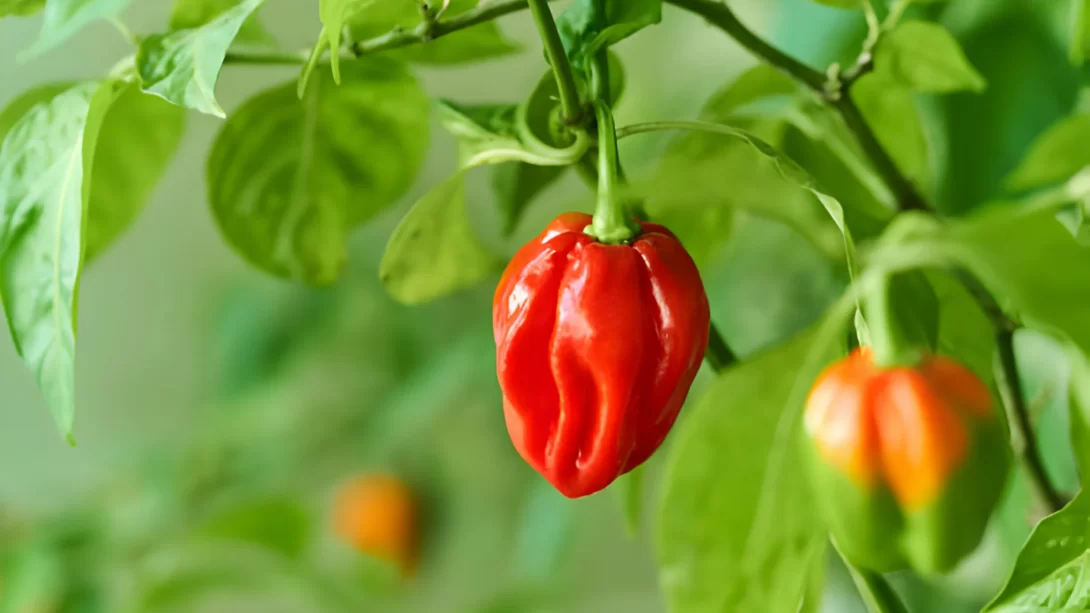Habanero peppers are renowned for their intense heat and vibrant flavors, making them a favorite among spicy food enthusiasts. Originating from the Amazonas region and now cultivated worldwide, these small, lantern-shaped peppers rank high on the Scoville scale, which measures the pungency of chili peppers. The timing of the harvest is crucial, as it directly influences the pepper’s flavor, heat, and the overall health of the plant. This article will guide you through identifying the perfect time to pick habanero peppers, ensuring you get the best from your crop.
Habanero Pepper Maturity
The journey from seed to mature habanero pepper is a fascinating process. Habaneros typically take about 75-90 days to reach maturity after transplanting. Recognizing the signs of maturity is key to harvesting peppers at their peak. Mature habanero peppers typically exhibit a vibrant color change, from green to shades of orange, red, or even chocolate brown, depending on the variety. Size is also an indicator; a typical habanero reaches 1 to 2.5 inches in length when mature. Another sign is the texture of the pepper’s skin, which should feel firm and smooth.
Optimal Harvesting Time
Deciding the best time to pick your habaneros can be a balancing act. Generally, habaneros are ready to harvest when they have reached their final color. This color change signifies that the peppers have developed their full flavor and heat profile. However, some gardeners prefer to harvest them when they are still green, as the peppers will have a milder taste. The stage of ripeness at harvest not only influences the pepper’s heat and flavor but also its suitability for different culinary uses. For instance, fully ripened peppers are ideal for sauces and salsas, while slightly less mature peppers might be better suited for fresh salads or garnishes.
Harvesting Techniques
Harvesting habanero peppers requires a gentle touch and the right tools. To start, it’s advisable to wear gloves, as the capsaicin in the peppers can irritate skin and eyes. Using a sharp pair of garden scissors or a knife, cut the pepper from the plant, leaving a short amount of stem attached. Pulling or twisting the peppers off can damage the plant and the pepper itself. It’s important to harvest regularly, as this encourages the plant to produce more fruit. Be sure to check your plants every few days, especially in peak growing seasons, as habaneros can ripen quickly.
Post-Harvest Handling
Once harvested, proper handling and storage of habanero peppers are crucial for preserving their quality. Fresh habaneros can be stored at room temperature for a few days, but for longer storage, keep them in the crisper drawer of your refrigerator. This can extend their freshness for up to two weeks. If you have an abundance of peppers, consider preserving methods like drying, pickling, or freezing. Dried habaneros can be ground into a spicy powder, while pickled or frozen peppers retain much of their fresh flavor and heat.
Troubleshooting Common Issues
Sometimes, gardeners face challenges in the habanero harvesting process. One common issue is peppers dropping off the plant before they are fully ripe. This can be due to environmental stress like extreme temperatures, overwatering, or nutrient deficiencies. Ensure your plants are well-watered, especially in hot, dry conditions, and consider using a balanced fertilizer. Pests, such as aphids and pepper weevils, can also affect your harvest. Regularly inspect your plants and use appropriate organic or chemical controls as needed. By addressing these issues promptly, you can ensure a healthy and bountiful habanero harvest.
Maximizing Yield and Quality
To get the most out of your habanero plants, there are a few additional tips to keep in mind. First, ensure your plants get enough sunlight and water, but avoid overwatering, as this can lead to root rot. Proper spacing between plants is crucial for adequate air circulation, which reduces the risk of fungal diseases. Applying a layer of mulch can help retain soil moisture and control weeds. Additionally, consider implementing companion planting; herbs like basil can deter pests and enhance the overall health of your garden.
Seasonal Considerations
The timing of your harvest can also depend on your local climate. In regions with a short growing season, starting seeds indoors or using a greenhouse can extend the growing period. For those in warmer climates, habaneros can often produce year-round. However, during cooler months, the plant’s growth and fruit development may slow down. Understanding these seasonal variations will help you plan your planting and harvesting schedule for optimal results.
Conclusion
Harvesting habanero peppers at the right time is key to enjoying their full flavor and heat. By understanding the signs of pepper maturity, using proper harvesting techniques, and addressing any garden issues, you can ensure a successful habanero harvest. Whether you’re a beginner or an experienced gardener, these tips will help you grow and harvest habaneros that add a spicy kick to your culinary creations. Remember, gardening is a learning experience, so don’t hesitate to experiment with different stages of ripeness to discover the flavors and uses that suit your taste best.



